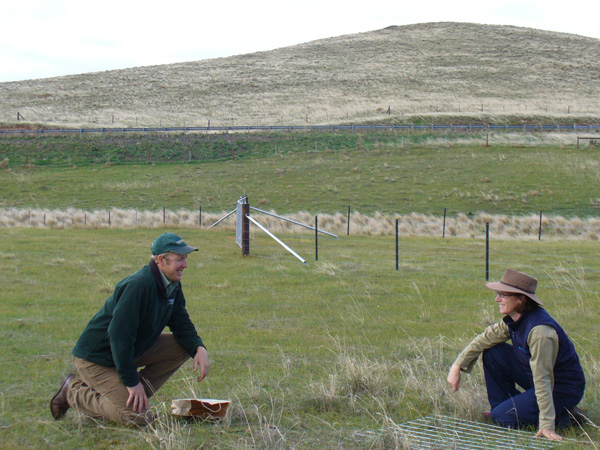Managing the fire recovery process
By the Barossa Improved Grazing Group
An extensive monitoring program, native plant identification, and soil testing has helped producers across Eden Valley, Hutton Vale, and areas near the Barossa Valley in South Australia recover and sustainably manage native grass pastures that are critical within their livestock grazing systems.
In 2014, areas of the eastern Mount Lofty Ranges, near the Barossa Valley, were burnt in two separate fires. The Eden Valley fire occurred in January and burnt over 24,000 hectares between Eden Valley and Truro. The following December, the Hutton Vale fire burnt 1,400ha east of Angaston.
The majority of the areas burnt were native pastures, made up of a range of species including native perennials, legumes, and other plants, which play a crucial role within the local livestock grazing system. Producers rely on these low input pastures to provide feed through the winter and spring, utilise summer rainfall, increase groundcover, and enhance local biodiversity.

Daniel Schuppan and Nicola Barnes, from Natural Resources SAMDB, monitoring pastures following the 2014 Eden Valley bushfires.
A community recovering from a major bushfire requires immediate and on-going support. After the immediate response, which generally included destocking their pastures, producers needed to focus their attention on ensuring their native pastures returned to productive potential.
The Barossa Improved Grazing Group (BIGG), in a project sponsored by Natural Resources Adelaide and Mount Lofty Ranges and Natural Resources SA Murray Darling Basin, helped producers monitor their pasture recovery while helping to match it to their livestock requirements.
Monitoring sites were selected so that burnt pasture performance could be compared side-by-side with unburnt pasture. In addition, a site which had been burnt twice was monitored to compare the effects on recovery.
For one year after the fire, all producers rested the pastures, which resulted in a 90 percent recovery of the native grass varieties, many of which regenerated directly from the burnt plants. However, the burnt areas still had significantly more bare ground than the un-burnt, with the burnt area peaking at 23 percent bare ground in March 2015, compared to 15 percent in the unburnt area. The production was also three times lower in the burnt areas compared with the unburnt areas.
The second year proved more difficult when it was critical to manage grazing to allow the pastures to fully recover. This was particularly important in the paddocks that were partially burnt because the feed quality of the burnt native grass was much higher than the unburnt, due to fresh growth compared to the old unburnt plants that have a mix of dead leaf and fresh leaf. When the monitoring sites were grazed, the livestock selectively grazed on the higher quality regrowth compared to unburnt dry native grasses. They had to be moved out of the paddock once the burnt area of the paddock reached 1000 kg/DM/ha, the benchmark set to promote recovery.
Today, three years after the fire, the native grass composition of the pasture is comparable to the unburnt monitoring sites, demonstrating the resilience of these native varieties. However, the overall pasture production in the burnt areas are still one third less kilograms of dry matter per hectare. In addition, the area burnt twice is producing half that of the area only burnt once. These results indicate that the recovery process after fire takes much longer than the anticipated two years and that careful grazing management involving strategic grazing to allow seed set and promote growth is critical for the restoration and continued production of native pastures.
Further information including a case study booklet and videos on the recovery process of native pastures is available on the BIGG website www.biggroup.org.au.



